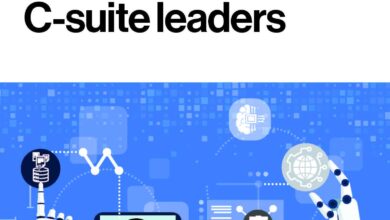AI presents an existential threat – and huge opportunity

In 2023 Bain conducted research to understand what industries and functions would be most impacted by generative AI. Guess what industry was top of the list? You guessed it, professional services.
The automation and productivity gains from AI present both an existential threat and huge opportunity for services firms. But to seize the opportunities, companies need to move from fear to curiosity.
IT services firms are already earning billions on AI
Let’s start with the opportunity for tech services firms, which are becoming abundantly clear. According to Accenture’s second quarter earnings results, the company booked more than $600 million for generative AI work. At that rate, Accenture will earn more than $2 billion a year from selling generative AI services. CEO Julie Sweet says that’s the fastest growth the company has ever seen sales ramp for an emerging technology.
Not surprising. Consulting companies have always been at the forefront of emerging tech trends, helping customers make sense of where new technology fits into their business and supplying capabilities most companies don’t (yet) have in-house. Generative AI is no exception.
In our 2023 Tercera 30 research, we surveyed 50+ services firms on how they were adopting AI. Interestingly, the fastest-growing firms were those who viewed AI as more central to their business strategy.
Again, not surprising. Companies that are more forward-looking tend to be the ones that stand out and are chosen as partners for other innovative companies.
We’re seeing this across our own portfolio of technology services firms. Every single one of them is exploring ways to use generative AI to deliver more efficiency, spur growth and improve profitability.
Some like Zennify and Hakkoda are building internal AI co-pilots to onboard teams faster, to speed discovery in projects, and to scale expertise in specific technologies. These tools are already delivering significant efficiency gains. Others like Orium are using AI to speed the development of accelerators. BeyondID is finding ways to use AI to help teams in its Virtual Security Operations Centers detect and remediate threats. And these are just a few of the examples.
IT services companies — whether they realize it or not — are incredibly data-rich. Especially those that have codified their institutional knowledge from across years of work and lessons learned.
Because of this, the AI use cases within a services company are almost limitless. Often the hardest — albeit most important — piece is getting the data in order, and ensuring that client and proprietary data is protected.
Here comes the existential threat
All of these opportunities also constitute an existential threat for those that can’t adapt.
There’s a common saying that “people won’t get replaced by AI, they’ll get replaced by people who use AI.” That holds doubly true for people-based businesses.
Those who have figured out how to apply AI will be able to deliver faster, at higher quality, for lower costs. It’s not going to happen overnight, but AI models and AI-enabled tools are improving by leaps and bounds every day. It’s going to happen. Those who put their head in the sand and aren’t curious about the potential of AI in their business, will find themselves too far behind to catch up.
Client expectations are beginning to evolve too, especially the innovative ones. They see the impact that AI can have on their own world and they’re going to expect faster results, at a lower cost from their services partners.
All of this will have a fundamental impact on the business model of services business. Today the revenue for most services firms is inextricably linked to headcount. Need more revenue? Sell more hours from more people. That is going to change, and not every firm is equipped to adapt.
If your business currently bills solely based on time, what happens when you automate thousands of hours within a project that would have been billed per hour from consultants? Are you able to charge for it according to the contract? You could potentially lose millions of dollars in revenue if you haven’t adjusted for how you price.
We are potentially seeing this play out with the larger services firms, many of which have announced billion dollar investments into AI. Accenture may have sold more than half a million dollars in generative AI work and grown five percent year-over-year last quarter, but the company is guiding down revenue for the year and announced it would be cutting 2.5% of its workforce over the next 18 months — approximately 19,000 employees. KPMG announced it would be cutting two percent of its U.S. workforce in February. Bloomberg reports that McKinsey is in the process of laying off nearly three percent of its technical specialists.
It could simply be that these firms over-hired and they’re seeing overall demand slow, but the insatiable demand and investment into AI combined with these projections should give IT service leaders pause. What are they seeing that could be coming for your business?
The opportunity hidden in disruption
The good news is that AI disruption is happening across the board, which means every one of your competitors will be in the same situation as you.
Some will be in denial about it and be caught flat-footed. Some will over-react and make rash changes that make things worse. A select few — and this is the group you want to be in — will be ready for disruption and ready to seize the new advantages that will emerge.
The challenge is to adopt a ‘beginner’s mind’. If you were starting your company today, what kind of organization would you build and what kind of data would you need to thrive in an AI-driven future? If you were starting today, you’d probably think in terms of building the right end-to-end business capabilities, rather than tweaking function-by-function use cases.
What outcomes will your customers expect, and how could they be delivered differently? Are there problems that your customers have been looking to solve that have been too hard or too unprofitable to deliver in the past? You might find entirely new revenue streams there, but you won’t find them unless you look.
Think about which use cases to prioritize, and which have the strongest revenue potential in the short and long-term. Which employees will be affected first, and where can you redeploy them?
Look for strategic bets where the early embrace of AI can create differentiated sources of value that are hard for your competitors to match.
I’ll leave you with these words from the authors of The Curious Advantage:
By being curious, we give ourselves permission to be disrupted and to be open to something new. The moment we move from wondering to acting we start to become creative.
Now is the time to move from wondering to acting.



